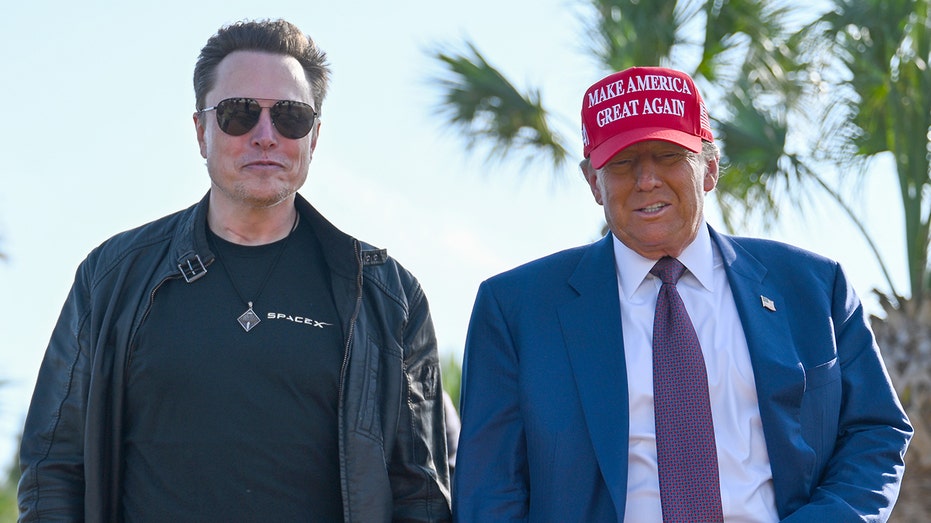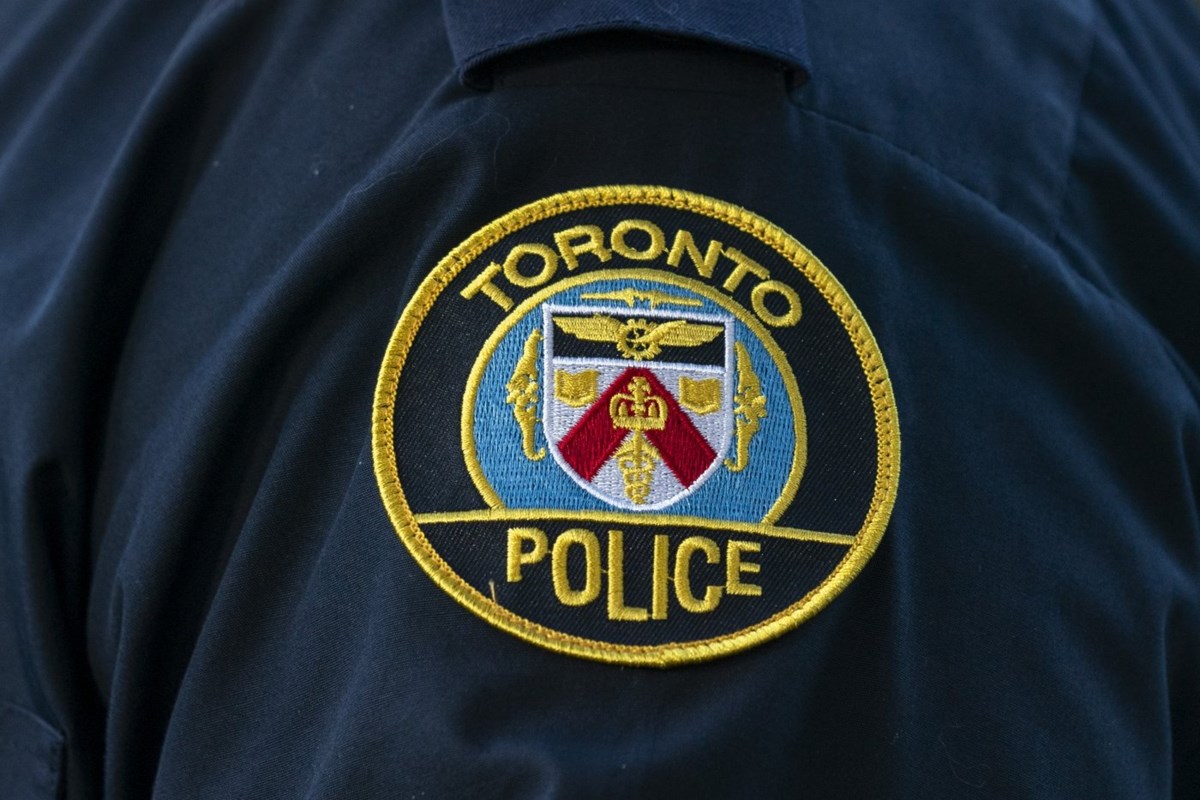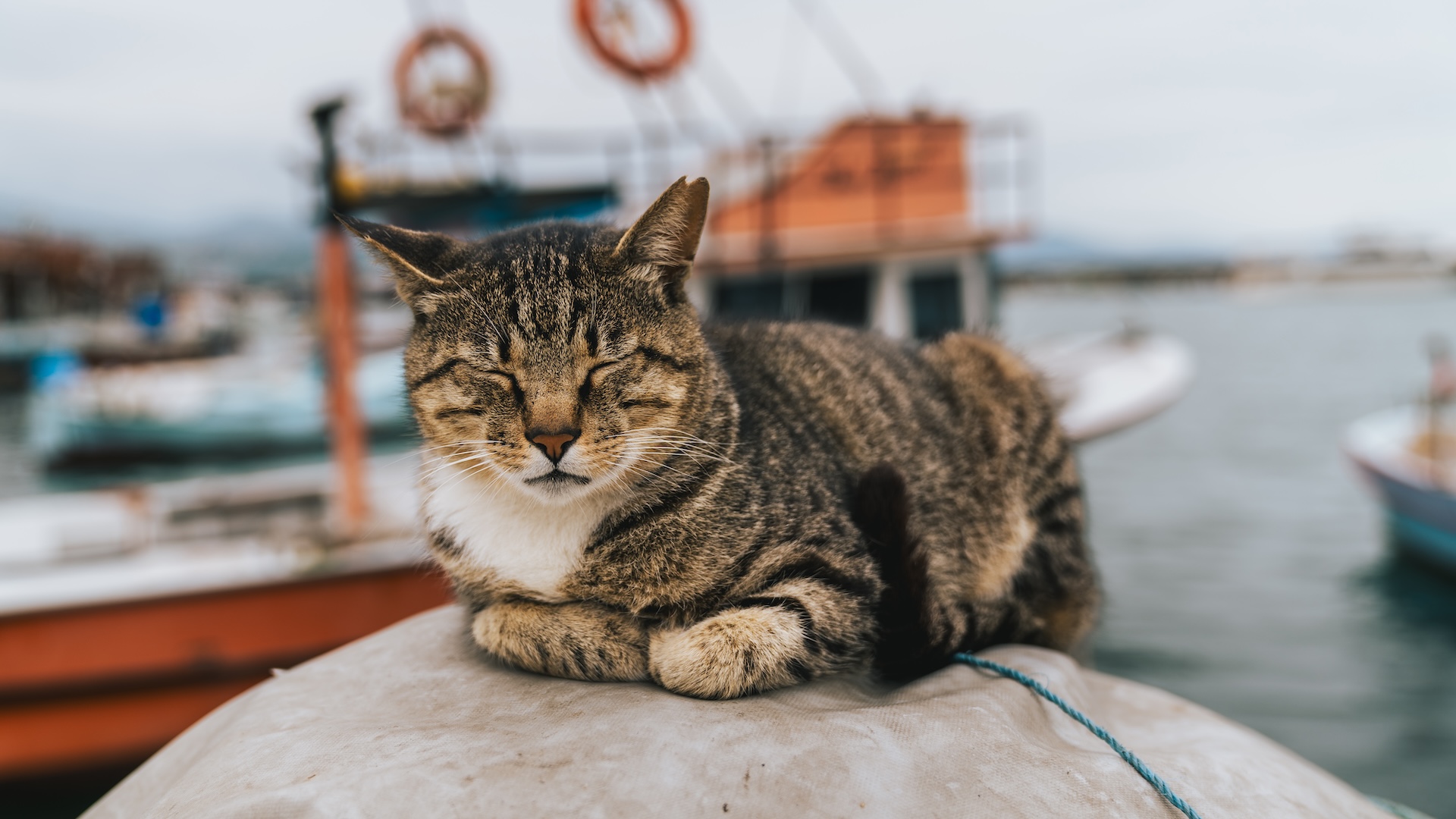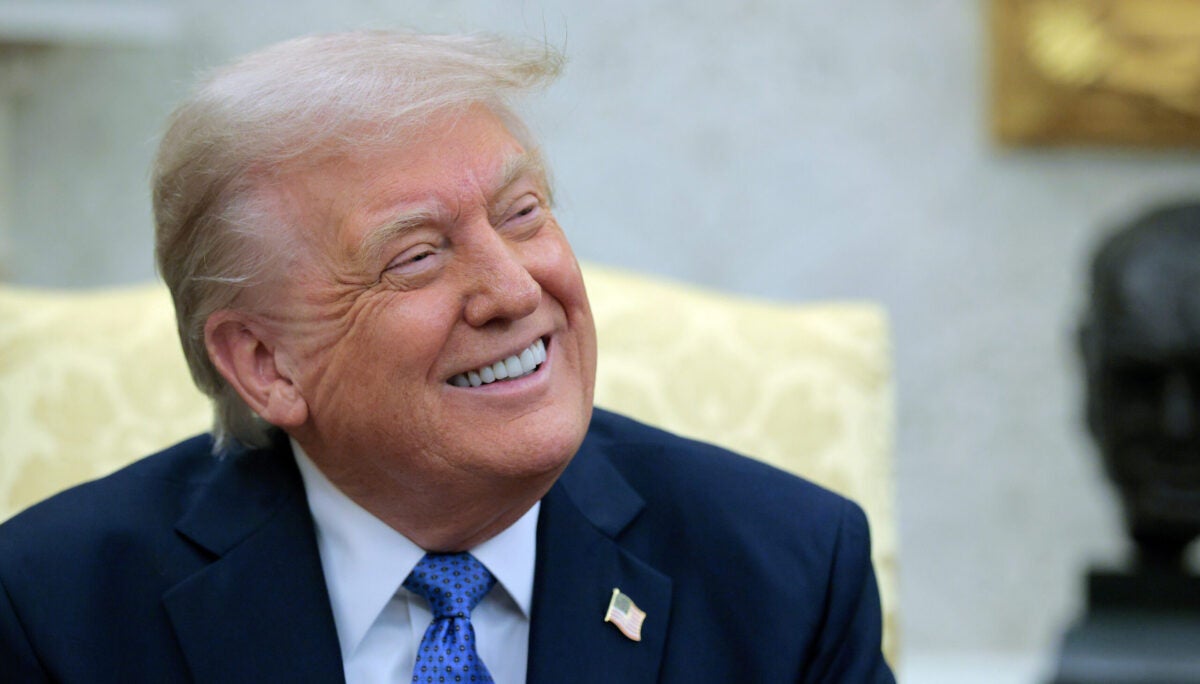“It’s About Him”: Renowned White House Photographer Pete Souza on How Trump Is Perverting the Presidential Photo Stream

Subsequently, every official White House photographer, including me, has tried to reach the standard that Okamoto set. This is true of photographers for both Democratic and Republican presidents. There are no laws or rules that dictate an official photographer’s access or exactly what or when they can photograph. Thus, there have been some bumps along the way since LBJ’s day. President Richard Nixon, for instance, did not give his chief photographer, Ollie Atkins, very much access, especially during the Watergate scandal. I was fortunate to be an official White House photographer for President Ronald Reagan and then, 20 years later, the chief official White House photographer for President Barack Obama. During his administration, I was granted unprecedented fly-on-the-wall access. Like Okamoto, I was able to show context and emotion in my photographs. More importantly, I was able to capture moments that showed the humanity of both presidents in good times, but also during their setbacks. Because all of it is history. I’ve been perusing the official White House photographs from the first 100 days of President Donald Trump’s second term. The White House has already posted more than 2,600 photos on its Flickr photostream. (The landing page reads: “The official photostream of the White House. Joined January 2025.” Flickr was also the main receptacle of official photos under Barack Obama, Trump I, and Joe Biden.) Numerous still photographs also appear on the @POTUS and @WhiteHouse Instagram and Facebook accounts, often with superimposed campaign-like words or graphics. (On Trump’s own platform, Truth Social, text is the preferred medium, though the president’s feed has many photos and videos, as do the White House feeds for X and TikTok.) It is apparent that the current official photographers have unlimited access to all of Trump’s public events—and good access to some situations not open to the press. I have no criticism of the technical or aesthetic quality of their images. They do a standout job documenting the situations they have access to. I personally know two of his official photographers, one of whom worked for me during the early part of the Obama administration. But it’s a bit unsettling to look through the nearly 100 albums on Flickr. It’s like looking at the set of a reality TV show, starring Donald Trump. The Oval Office itself has been ornately decorated in a style akin to that of his Mar-a-Lago estate. There is gold everywhere, even gold coasters branded with his name. Rather than selecting two or three paintings to place around the fabled fireplace—where many official encounters are photographed—Trump has chosen to hang more than a dozen gold-framed presidential portraits. The Swedish ivy that has been on the mantle since at least the Ford administration has been replaced with seven gold decorative objects. Many of the official photographs that have been made public depict situations in which the White House also invited hand-selected members of the press into the Oval Office. The president is seated at the Resolute Desk for the purposes of signing his latest executive order with a fat Sharpie pen. Or he’s seated in a chair next to a head of state at the opposite end of the Oval, in front of the fireplace. From videos, we know that it’s mainly a performance. These sessions last 20, 30, 40 minutes; typically, Trump holds court, at times verbally spewing word salad often mixed with falsehoods. Photographs often appear on the official White House Facebook and Instagram accounts soon thereafter. On Flickr, the White House tends to post too many images from the same setting. Do we really need to see 67 photos from the swearing-in ceremony of Robert F. Kennedy Jr.? Wouldn’t two or three selects suffice? Do we really need to see 80 frames of Trump with the president of El Salvador, surrounded by members of the media? Each album of photos posted on Flickr has a title. For example, a recent album of 43 photos is entitled “President Trump signs executive orders alongside Sec of Education Linda McMahon and wounded warriors in the Oval Office.” In one photo, about a dozen MAGA hats are on the Resolute Desk. After signing the orders, Trump, in other photos, is shown handing out the autographed hats or signing prostheses. I applaud Trump for doing an event with the wounded warriors. But how do the “executive orders” relate to them? Why not identify them and tell us their stories, too? The only recognizable person in this album is Donald Trump (notwithstanding that some people might recognize the education secretary). And judging from the lack of information about the other people pictured and the sheer volume of imagery, I guess that’s the point. It’s about him, not them. Even the behind-the-scenes images—despite being top-notch photographically— often look like part of the reality show. There is little hint of the president’s humanity, and even when there is, there’s an oddity to it. For example, three recent photographs show him meeting with “Patty Morin, the mother of Rachel Morin.” At first, the name didn’t register, until I searched the internet to refresh my memory: Rachel Morin had been murdered by an immigrant from El Salvador whom the US accused of entering the States without authorization. During this “meeting,” Patty Morin is shown standing the entire time while Trump remains seated at the Resolute Desk. His attempt at humanity appears passive: He is shown in the photo receiving a hug from her. He doesn’t bother to stand up; instead, she awkwardly bends over to embrace him. A large map of the Gulf of America can be seen in the background. WHAT WE AREN’T SEEING From my years working in the West Wing, I know that any given day has the potential to yield images of significance. And as I’ve monitored the recent output of pictures, it is clear to me what the White House is not showing. Thus far on the Flickr photostream there are no pictures of Trump during national security meetings in the Situation Room. There are no pictures of Trump’s substantive phone calls with Vladimir Putin. There are no pictures of Trump with his national security adviser, Mike Waltz, in the aftermath of the Signal-chat scandal. When the US launched military strikes against the Houthis in March, a handful of photos were posted on Trump’s Instagram account, but not on Flickr. (He is wearing headphones over a red MAGA hat that is signed with his own autograph.) As far as I can tell, we haven’t publicly seen pictures of him meeting with the DOGE team. Elon Musk does appear in some situations, including a Tesla event open to the press on the South Grounds, where Trump claimed he had just purchased one of Musk’s vehicles. There appear to be no officially released pictures of him at his club in Florida after his raft of tariffs caused many an American’s 401(k) to plummet. Do photographs from these situations exist? Could they be holding them back for an album about the first 100 days? The first photograph, in my opinion, that shows any semblance of a true behind-the-scenes historical moment came on day 97 of the administration. It shows Trump meeting privately with Ukrainian president Volodymyr Zelenskyy at the Vatican prior to the funeral of Pope Francis. The photo appeared on Zelenskyy’s social media accounts and was distributed by the Associated Press, Getty Images, and others. The embedded metadata has no photographer credited but includes the copyright notice “Ukrainian Presidential Press Office.” To my eye, it looks like an iPhone photo, and I surmise it was taken not by an official photographer but by one of Zelenskyy’s aides. A similar version later appeared on some of the White House social media accounts, but not on Flickr. It, too, is uncredited. President Trump was impeached twice by the House—and cleared twice by the Senate. If you’ll recall, his first impeachment hinged in part on what he characterized as a “perfect” phone call to Zelenskyy. Trump had asked the Ukrainian president to launch an investigation into the alleged actions of Hunter Biden—or else Trump implied he would not agree to release funds earmarked for Ukraine that Congress had already appropriated. Trump’s supposed motivation—as laid out in the articles of impeachment against him—was to damage the prospects of Joe Biden, who was his opponent in the 2020 election. Remember the photograph of that call? You can’t, because none exists—or has not been made public. (Since Zelenskyy refused the alleged request for a quid pro quo, I can’t help but wonder if Trump had any lingering resentment toward him when the two presidents had their infamous West Wing blowup two months ago.) By contrast, the practice under Obama was to allow me to photograph all head-of-state calls during his eight years in office. You might say, “What’s the big deal? It’s just a picture of a guy on a phone.” But photographs can show the mood and emotion during such a high-level conversation. A photograph can show where the call is taking place. A photograph can show who else is in the room. These visual elements are crucial for the record. On January 6, 2021, during the insurrection at the Capitol, President Trump remained in the Oval Office dining room for several hours, watching the situation unfold on television, before taking any action to intervene. There are no photographs of this because Trump barred his chief photographer, Shealah Craighead, from the room. She later testified under oath before the January 6 congressional committee. According to Craighead, Trump’s assistant, Molly Michael, told her, “No photos for the rest of the day.” To her credit, Craighead responded, “You’re going to want photos. This is historical. Everything that’s happening today is historical.… You’ll want photos for the archives. It might not seem like you do now, but perhaps later you will. It’s all history.” But Trump’s assistant purportedly wouldn’t budge. “No photos today,” she said, as described in Craighead’s sworn testimony. “He doesn’t want any photos.” (Michael was not questioned by the committee about Craighead’s assertions, which were made nearly three months after Michael testified.) PRESIDENTIAL PHOTO SELECTION At times, Trump has a rather unique sense of what he thinks is a good photograph of himself. One memorable picture from Craighead during Trump’s first term really stands out. The president had a contentious meeting in the Cabinet Room with House Speaker Nancy Pelosi. In the photo, Pelosi is standing up, surrounded by male congressional leaders and Joint Chiefs of Staff chair Mark Milley, pointing her right index finger towards Trump. He looks angry, maybe a bit stunned. Milley and others seated next to Trump are looking down, seemingly embarrassed at what’s taking place. Trump himself made the photo public. He posted it on what was then Twitter, with the caption “Nervous Nancy’s unhinged meltdown.” Many other observers, however, looked at this photograph and thought, Nancy Pelosi is a badass for standing up to the bully. Pelosi, in fact, made the image the cover photo on both her Twitter and Facebook profiles. (I should note that Daniel Torok, not Craighead, is the chief official White House photographer for Trump 2.0.) Today, at an entranceway through which White House aides and some guests walk into the Oval Office, Trump has hung a framed copy of a New York Post front page. It’s the one with his defiant mug shot, in Georgia, after he was indicted on charges of plotting to overturn the state’s vote count in the 2020 presidential election. (The case, though suspended for now, is still pending.) The placement of that front page sets a tone: I can do anything; nothing’s going to stop me. It’s probably no coincidence that his official photographic portrait, which hangs in most federal buildings, echoes the scowl and pose from that mug shot, yet with more dramatic, photorealistic lighting. What happened a couple of weeks ago is even stranger. First, some background. The White House Historical Association commissions a painting to hang at 1600 Pennsylvania Avenue after every president leaves office. The outgoing president chooses the artist. I was there in 2022 when President Obama’s official portrait was unveiled and hung in the Grand Foyer on the State Floor. The painting, by Robert McCurdy, was so lifelike that to my eye it was reminiscent of a Richard Avedon portrait. Trump recently had Obama’s portrait removed and positioned in another location not far away. Which is the president’s right. But what’s particularly galling is that in its place, Trump decided to hang a painting depicting the well-known photograph of himself pumping his fist in the air after the July 2024 assassination attempt. Let’s recap what happened that day in Pennsylvania. Someone had tried to kill him. A bullet had grazed his ear, and after he realized he was not gravely injured, he had the presence of mind to create his own reality show moment for the cameras: raising his fist in defiance. Click, click, click. The photo by Evan Vucci of the Associated Press was on the front page of newspapers throughout the country. It soon became a cornerstone of MAGA iconography: a would-be martyr, miraculously resurrected. In several aspects, the image—showing a president looking outward, his security detail surrounding him, graced by the presence of an American flag—is Trumpworld’s version of the Emanuel Leutze’s painting Washington Crossing the Delaware. And now a painting based on this photograph has pride of place on the State Floor. For those on White House tours, it is displayed in the most prominent position they pass. White House press secretary Karoline Leavitt said in a statement that the portrait was displayed “temporarily,” implying that another painting will take its place. Nonetheless, a recent photo posted on his Flickr photostream shows Trump standing in front of the painting with two guests on hand for an Easter prayer service, one of them evangelist Franklin Graham (son of Billy Graham). Giving his trademark thumbs up, the president offers a camera-ready grin, seemingly unaware of how his expression and gesture diverge from the gravity of the instant conveyed behind him. It’s a jarring contrast to the moment when, in Trump’s own words, a “vicious monster unleashed evil.” At the end of the Trump administration, convention dictates that the official White House photostream will be locked and become forever viewable, just as we’re seeing it now, under the propriety of the National Archives. In 60 years, I wonder what people will think as they look back at these albums of photographs. That’s assuming the National Archives still exists. Pete Souza, who served on the photo staff of President Ronald Reagan, spent eight years as Barack Obama’s chief official White House photographer. Souza, the subject of Dawn Porter’s documentary The Way I See It, has gained renown for his Instagram feed (@petesouza, with 3 million followers), on which he has posted images from his time in the Obama White House—images that contrasted sharply with those from Donald Trump’s first term. These juxtapositions became the subject of his book, Shade: A Tale of Two Presidents, a follow-up to his #1 New York Times bestseller Obama: An Intimate Portrait. In 2022, Souza published The West Wing and Beyond: What I Saw Inside the Presidency.

















